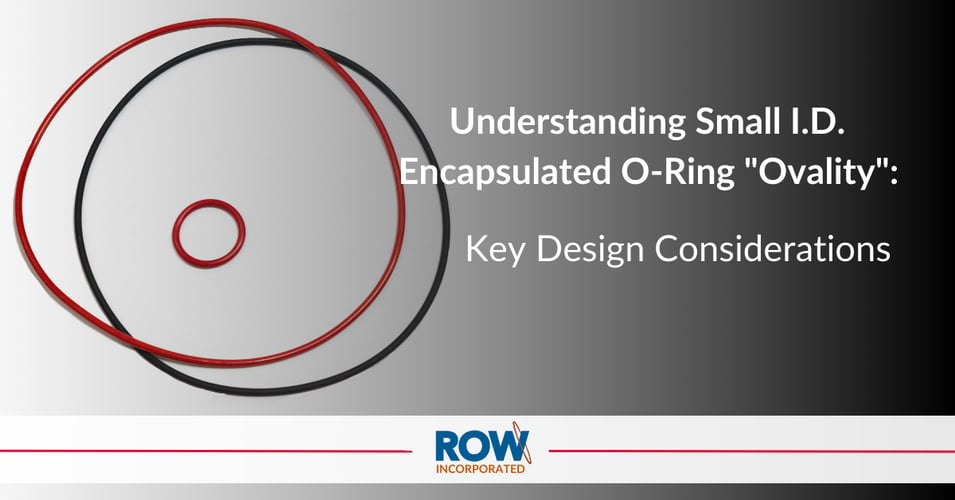Understanding Small I.D. Encapsulated O-Ring "Ovality": Key Design Considerations

Table of Contents
Introduction
In the specialized field of sealing solutions, understanding the nuances of O-ring design can significantly impact the performance and reliability of your applications. This blog post delves into an essential aspect of small inside diameter (I.D.) encapsulated O-rings, known as "ovality," and offers guidance on how to address this phenomenon in your design process.
What is Ovality?
Ovality refers to the deformation of the cross-sectional shape of an O-ring from a perfect circle to an oval. This occurs when a straight length of elastomer cord is encapsulated in FEP or PFA tubing and formed into an O-ring. Due to the mechanical stresses involved in this process, the cross-section of the O-ring does not remain round but instead becomes oval. This effect is particularly pronounced in encapsulated O-rings with small I.D.s and large cross sections.
Impact of Small I.D. Encapsulated O-Ring Ovality
The change from a round to an oval cross-section results in an enlargement of the axial cross-section and a reduction in the radial cross-section. This alteration can significantly affect the sealing performance, as the seal may not uniformly contact the interfacing surfaces. Understanding this change is crucial for applications where precision and reliability are paramount.
Measuring and Adjusting for Ovality
To accurately assess the impact of ovality and ensure that an O-ring meets manufacturing standards, one must measure both the axial and radial cross-sections. The average of these two measurements provides a reliable dimension that reflects the true shape of the O-ring under stress.
Diagram Explanation
Note: Diagram A illustrates the differences in the axial and radial dimensions due to ovality.
Small I.D. encapsulated O-rings Design Recommendations
It is important to note that our recommendations on application design and material selection are based on available technical data and are intended as suggestions only. Each user must conduct thorough evaluations to determine the suitability of an O-ring for their specific application. ROW, Inc. offers no express or implied warranties concerning the form, fit, or function of a product in any application.
Conclusion
Understanding and accommodating the ovality in small I.D. encapsulated O-rings are essential for achieving optimal sealing performance. By considering the unique characteristics of these O-rings and employing precise measurement techniques, designers and engineers can enhance the reliability and efficiency of their applications.
Are you facing challenges with encapsulated O-rings in your projects? Our team at ROW, Inc. is here to help. Reach out to us for expert advice and tailored solutions that address the specific needs of your applications. Don’t let ovality compromise your project’s success—contact our team today for more information and support!
![5[1] 5[1]](https://row-inc.com/hs-fs/hubfs/5%5B1%5D.png?width=200&height=200&name=5%5B1%5D.png)



